#nurse elkins
Text

Yiddish writers, Warsaw, 1922
From left to right, with short biographies:
Esther (Esye) Elkin (?–?) was the wife of Mendl Elkin.
Mendl Elkin (1874–1962) was born to a family of Jewish farmers in Belarus. Though working as a dentist for six years, he was more interested in arts and culture, and would spend his spare time writing for socialist newspapers and acting in an amateur Russian-Yiddish theatre group. He spent the 1910s–1920s between Bobruisk and Siberia before moving to Vilna and founding a theatre group, as well as editing literary journals and writing poetry. He would later move to New York, where he served as Chief Librarian for YIVO.
Peretz Hirschbein (1880–1948) was born near Grodno; his father operated a water mill. He studied at a yeshiva before becoming a Hebrew teacher. In his 20s he began to write poetry and plays in both Hebrew and Yiddish, and would soon move to Odessa to stage his plays. After his theatre troupe disbanded in 1910, he spent the remainder of his life travelling, finally moving with his wife Esther Shumiatcher to Los Angeles.
Uri Zvi Grinberg (1896–1981) was a Yiddish writer before moving into Hebrew. Born into a Hasidic family in what is today Ukraine, he served in the Austro-Hungarian army. Radicalized by the November 1918 pogrom in Lwów, he spent the interwar period between Palestine and Europe. He co-founded the self-proclaimed fascist group Brit HaBirionim and later served as a Member of Knesset for Herut. He was awarded the Bialik Prize three times, as well as the Israel Prize for his contributions to literature.
Khane Kacyzne (?–?) was the wife of Alter Kacyzne. Together they had a daughter, Shulamith, who survived the Holocaust by hiding as a non-Jew. Khane was murdered at Bełżec.
Alter Kacyzne (1885–1941) was a prolific photographer and writer, born to a bricklayer and a seamstress in Vilna. He took up photography early, at age 14, by which point he had also taught himself Hebrew, Polish, German, Russian, and French (alongside his native Yiddish) and had begun to write poetry. Through the interwar period he worked as a photojournalist, travelling extensively, as well as serving as editor for several literary magazines and writing for communist newspapers. He was beaten to death by Ukrainian fascists in 1941, and his wife Khane was murdered at Bełżec extermination camp.
Esther Shumiatcher (1896–1985) was born in Grodno, though her family emigrated to Alberta, Canada in 1911. Interested in poetry and screenwriting, she worked several jobs to make money: as a waitress, in a meat-packing plant, and helping her family run a boarding house out of their home. In the 1920s she went to Warsaw and worked extensively as a poet; her poem "Albatros" gave its name to a modernist Yiddish journal. She was married to Peretz Hirschbein, whom she met while he was taken ill in Calgary and nursed back to health in her family's home. After her husband's death in 1948, she moved to New York.
From the YIVO Archives.
#yiddish#yidishkeyt#jewish#jewish history#uri zvi greenberg#uri zvi grinberg#esther shumiatcher#peretz hirschbein#perets hirshbeyn#alter kacyzne#khane kacyzne#mendl elkin#esther elkin#1922#jumblr
65 notes
·
View notes
Photo
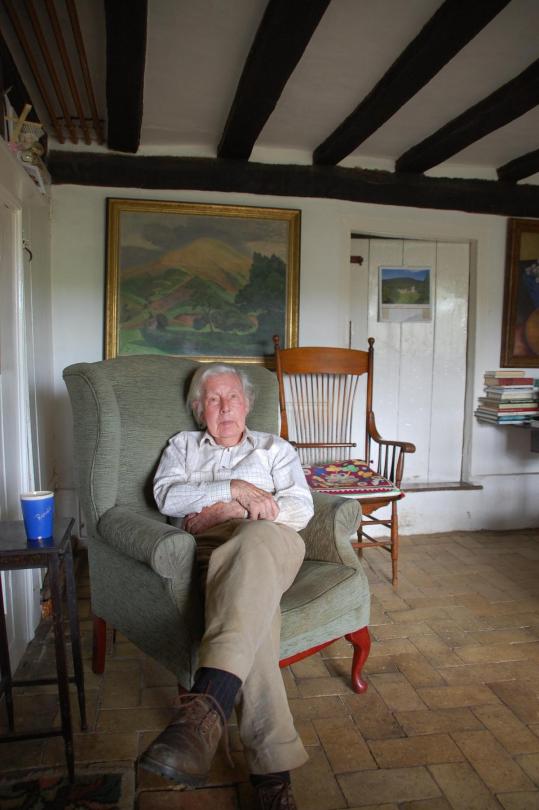
In the summer of 1967, Ronald Blythe cycled from his home in the Suffolk hamlet of Debach to the neighbouring village of Charsfield. There he listened to the voices of blacksmiths, gravediggers, nurses, horsemen and pig farmers. He gave them names from gravestones and placed them in a fictional village. Akenfield, a portrait of a rural life rapidly disappearing from view, was immediately acclaimed as a classic when it was published in 1969.
Never out of print and read and studied around the world, Akenfield made Blythe famous and perhaps overshadowed the many other fruits of his long years of writing – short stories, poems, histories, novels and, in later life, luminous essays and a superb weekly diary that the Church Times published for 25 years until 2017. Blythe, who has died aged 100, is regarded by his peers and many readers as the finest contemporary writer on the English countryside.
The eldest of six children, Blythe was born in Acton, near Lavenham, into a family of farm labourers rooted in rural Suffolk. His surname comes from the Blyth, a small Suffolk river, but his mother and her family were Londoners. His mother, Matilda (nee Elkins), a nurse, passed to him her love of books. Although Blythe left school at 14, by then he had already established a voracious reading habit – “never indoors, where one might be given something to do,” he remembered – which became his education.
His father, Albert, had served in the Suffolk Regiment and fought at Gallipoli and Blythe was conscripted during the second world war. Early on in his training, his superiors decided he was unfit for service – friends said he was incapable of hurting a fly – and he returned to East Anglia to work, quietly, as a reference librarian in Colchester library.
He befriended local writers including the poet James Turner, who helped his passage into a bohemian, creative Suffolk circle that included Sir Cedric Morris, who taught Lucian Freud and Maggi Hambling and lived nearby with his partner, Arthur Lett-Haines. Blythe “longed to be a writer”, he said, and he listened and learned – inspired by the example of poet friends including Turner (the unnamed poet in Akenfield) and WR Rodgers of how to live with very little money. “It was a kind of apprenticeship,” he once recalled.
Most importantly, in 1951 he met the artist Christine Kühlenthal, wife of the painter John Nash. Kühlenthal encouraged his writing and championed him: Blythe edited Aldeburgh festival programmes for Benjamin Britten and even ran errands for EM Forster, who took a shine to the shy young man. Blythe helped Forster compile an index for Forster’s 1956 biography of his great-aunt, Marianne Thornton.
Blythe’s first, Forster-inspired novel, A Treasonable Growth, was published in 1960. He followed it in 1963 with The Age of Illusion, a social history of life in England between the wars. He earned money from journalism, being a publishers’ “reader” and editing a series of classics – including one of his heroes, the essayist William Hazlitt – for the Penguin English Library.
After a stint living in Aldeburgh, recalled in an elegiac and characteristically discreet memoir, The Time by the Sea (2013), he moved to a cottage in Debach. In the mid-1960s, he was befriended by the American novelist Patricia Highsmith. “I admired her enormously. She was a very strange, mysterious woman. She was lesbian but at the same time she found men’s bodies beautiful,” he remembered. One evening, after a Paris literary do, they slept together; he told a friend they were both curious “to see how the other half did it”.
Blythe said the idea for Akenfield (he took the name from the old English “acen” for acorn) arrived as he tramped the Suffolk fields pondering the anonymity of most farm labourers’ lives. His friend Richard Mabey remembers it being commissioned by Viking as the lead title for a short-lived series on village life around the world.
Over 1967 and 1968, he listened to the citizens of Charsfield, recreating authentic country voices while somehow adding a poetry of his own. The result was a portrait of the “glory and bitterness” of the countryside: the penury and yet deep pride of the old, near-feudal farming life, and its obliteration in the 60s by a second agricultural revolution alongside the arrival of the car and television.
The village voices were never sentimental about country life, and nor was Blythe: as well as stories of how to make corn dollies, there were quiet revelations of incest, and the district nurse recounted the old days when old people were stuffed into cupboards. Old labourers remembered the “meanness” of farmers who had treated their workers like machines because the big rural families delivered a seemingly endless supply of farm-fodder.
Ecstatic reviews of this “exceptional” and “delectable” book in Britain spread to North America, where Time praised it, John Updike loved it and Paul Newman wanted to film it. But some oral historians were suspicious that Blythe had not recorded his conversations.
Blythe turned down a film offer from the BBC but eventually accepted a pitch from the theatre director Peter Hall, a fellow Suffolk man. Blythe wrote a new synopsis inspired by the unfilmable book, and Hall asked ordinary rural people to improvise scenes with no script. Blythe oversaw every day of filming and played an apt cameo as a vicar. Nearly 15 million people watched Akenfield when it was broadcast on London Weekend Television in early 1975.
Blythe’s next book, The View in Winter (1979), was a prescient examination of old age in a society that did not value it, at a time when more people than ever reached it. The “disaster” suffered by the old, he wrote, is “nobody sees them any more as they see themselves”. Blythe regarded it as his best book. While he was writing it, Kühlenthal died, and Blythe moved into the Nashes’ old farm, Bottengoms, to look after the elderly Nash. When Nash died a year later, he left the house to Blythe. There Blythe lived for the rest of his life, writing beautifully about his home in At the Yeoman’s House (2011).
In later years, Blythe drew praise for his short stories and essays, including a series of meditations on the 19th-century rural poet John Clare. Many writers who were later grouped together as “nature writers” became his friends, including Mabey, Robert Macfarlane and Roger Deakin.
Blythe never married, never lived with anyone, and kept his personal life veiled. Interviewed by the Observer in November 1969, he was judged “intensely private”. He disclosed nothing in his published writing about his love affairs with men, or indeed his one-night stand with Highsmith.
He was almost as reticent about his faith, but his writing was deeply suffused in his Christian beliefs and his knowledge of the scriptures. He was a lay reader – deputising for vicars across several parishes – and became a lay canon of St Edmundsbury Cathedral, but turned down the chance to become a priest.
Rowan Williams, the former archbishop of Canterbury and an admirer of Blythe’s writing, believed Blythe used the Christian year of festivals as “a steady backdrop” for his writing and thinking, which was liberated by his faith. The writer Ian Collins, a good friend of Blythe in his later years, felt it was Blythe’s lack of formal education or “training” that liberated his original thinking and elegant prose style.
Blythe was politically radical throughout his life, a Labour voter who joined peace vigils outside St-Martin-in-the-Fields in London. Friends were surprised when he accepted a CBE in 2017, around the time he was gently “retired” from public speaking and writing as his short-term memory faded. When he reached 100, he was still well enough to sign 1,500 copies of a new compilation of his best Church Times columns.
The old people who thrived in The View in Winter were those, Blythe concluded, who were able to preserve their “spiritual vitality, a vividness, an imaginative sort of energy”. This credo served him well as he grew older, although he was mistaken in another respect. The old, he wrote, are “cared for, surrounded with kindliness, and people are often interested in what they say; but they are not truly loved and they know it”.
Blythe was much loved in later life. A roster of devoted friends he called his “dear ones” visited him daily, supplied him with hot meals and ensured he could live out his years at Bottengoms.
🔔 Ronald George Blythe, writer, born 6 November 1922; died 14 January 2023
Daily inspiration. Discover more photos at http://justforbooks.tumblr.com
14 notes
·
View notes
Text
Retirement is one of the greatest milestones of a person’s life. It has its fair share of perks. On top of the list is having a lot of free time. In reality, it can’t be denied that retired seniors have a lot of time on their hands. This is because they no longer have to go to work on a regular basis. This is evident among older adults who are in a nursing home in Elkins Park, Pennsylvania.
0 notes
Photo

The Outsider runs Sept. 9-11 & 16-17. Get your tickets now at http://tktassist.com/Tix/?u=JCCT Meet the Cast! Michelle Elkins will be playing the part of Paige Caldwell, a professional pollster. Paige is a smart, confident woman with a professional’s view of politics: she sees it as a numbers game – a series of contests to be won. Michelle was born and raised in Brownstown and has spent most of her life in Jackson County. She is the Director of Assisted Living in a nearby LTC facility and loves being a nurse. Michelle has four children and 8 grandchildren whom she loves dearly. In her spare time she reads, crafts, sings, and performs in the theater. https://www.instagram.com/p/CiK319UuFSQ/?igshid=NGJjMDIxMWI=
0 notes
Text
RN Adult Medical Surgical Nursing 11th edition
RN Adult Medical Surgical Nursing 11th edition
RN Adult Medical Surgical Nursing
Archer Knippa, Sommers, Ball, Churchill, Elkins, Janowski, Roberts, Wright, Prater, Barnes
Categories:
Medicine – Nursing
Year:
2019
Edition:
11
Publisher:
ATI
Language:
english
Series:
Content Mastery Series Review Module
, 16.47
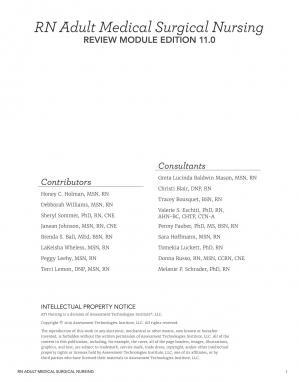
View On WordPress
0 notes
Text
National Nurses Week honors nurses’ contributions, services | News, Sports, Jobs
National Nurses Week honors nurses’ contributions, services | News, Sports, Jobs
ELKINS — Today marks the starting of National Nurses Week, which yearly honors the contributions and sacrifices of nurses, and urges us to thank them for their devotion to their responsibilities.
Countrywide Nurses 7 days is celebrated each individual calendar year concerning May possibly 6, Nationwide Nurses Working day, and May possibly 12, the birthdate of the famous nurse Florence…

View On WordPress
0 notes
Text
Poor Nurse Elkins getting dumped.
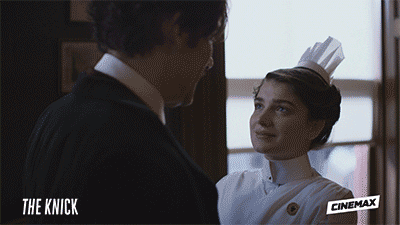
2 notes
·
View notes
Photo



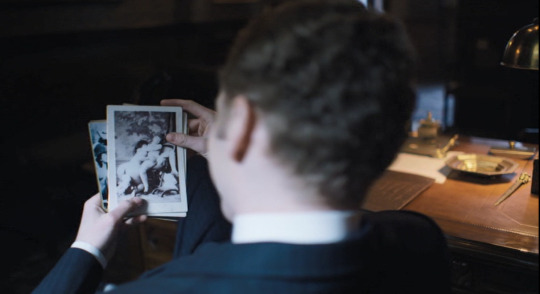



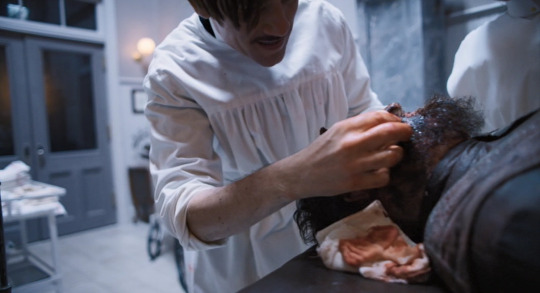


THE KNICK, Whiplash, Ep 5, S 2
43 notes
·
View notes
Photo

#red and black#Dr. John W. Thackery#Dr. Thackery#Clive Owen#eve hewson#lucy elkins#nurse elkins#couple#night#sleep#together#man#woman#dizi#diziler#tv series#gif#dizi film#diziller#yabancı dizi#yabancı diziler#dizi replikleri#yabancı dizi replikleri#yabancı dizi gifleri#dizi gifleri#lovely#red#black#assonance13#the knick
12 notes
·
View notes
Text
Binged Netflix’s limited series BEHIND HER EYES - based on the novel by Sarah Pinborough - starring Tom Bateman (DEATH ON THE NILE, THE ORIENT EXPRESS), Simona Brown (GRANTCHESTER, LITTLE DRUMMER GIRL) and Eve Hewson (THE LUMINARIES, ROBIN HOOD)


For those who have read the book, you’ll find it a fairly faithful adaptation. For those who haven’t read the book -- You’re not ready!!
If you’ve only known Hewson for her role as Nurse Lucy Elkins on Cinemax’s THE KNICK (now available on HBO MAX)-

which is being rebooted by Barry Jenkins (MOONLIGHT, IF BEALE STREET COULD TALK) and focusing on Andre Holland’s character Dr. Algernon Edwards (Hewson has said she has already texted Holland to remind him she’s his favorite castmember as a way to get in on the revival) - you’ll marvel at her range in BEHIND HER EYES.
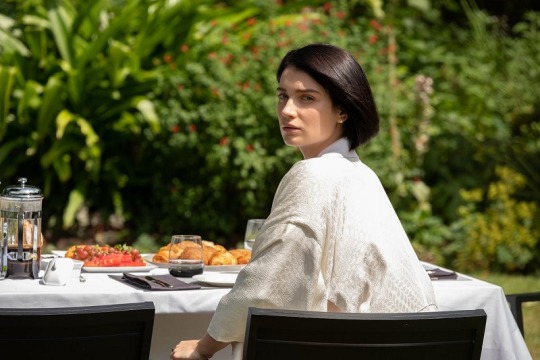
Other than her film and tv work, Hewson is known for another thing - being the daughter of U2′s lead singer Paul Hewson aka Bono. Hewson isn’t the only child of a celebrity who is/has forged their own path in the entertainment industry. Others include:
-James Badge Dale who is currently filming season 2 of Starz series HIGHTOWN starring Monica Raymund.

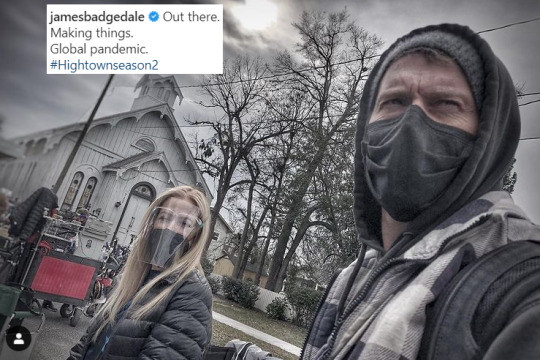
Dale had a truncated childhood acting career when he appeared in the 1990 film adaptation of LORD OF THE FLIES. After the film he decided acting was too much work so he quit, returning to the craft 11 years later.

His mother was actress/dancer Anita Morris (RUTHLESS PEOPLE) and father actor/dancer/choreographer Grover Dale ( WEST SIDE STORY). Grover famously (or infamously) was the rumored partner of Anthony Perkins (PSYCHO, MAHOGANY) for eight years.


Their relationship ended when a therapist suggested they marry women. Within days Dale married Anita and Perkins married Berry Berenson. Perkins and Berenson went on to have two sons: singer Elvis and actor/director Osgood “Oz” Perkins (Legally Blonde, Gretel & Hansel)

- Currently seen on Apple+’s DICKINSON as the vibrant Lavinia is Anna Baryshnikov, daughter of actor/ballet dancer Mikhail.


- Current face of Ermenegildo Zegna ‘s 2021 #WhatMakesAMan campaign is musician/model Gabriel Kane Day-Lewis son of actors Daniel Day Lewis and Isabelle Adjani.


with mom

-If you watched HBO’s WE ARE WHO WE ARE, you were sure to see Francesca Scorcese, daughter of Martin.


- Appearing in BRIDGERTON is Bessie Carter

daughter of Imaulda Staunton.

- Staunton appeared in Apple+’s TRYING with the peng Rafe Spall, son of Timothy Spall.

Rafe and his fantastic, carefree laugh



can be seen currently in Australia theaters starring in Josh Lawson’s romantic-comedy LONG STORY SHORT.
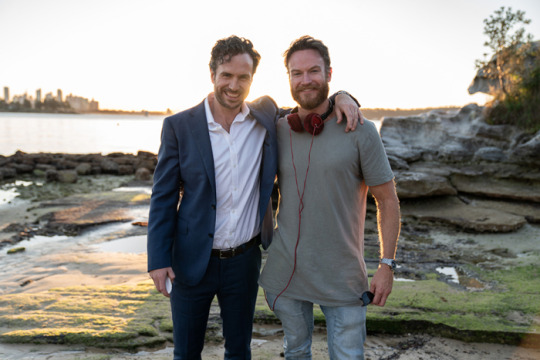
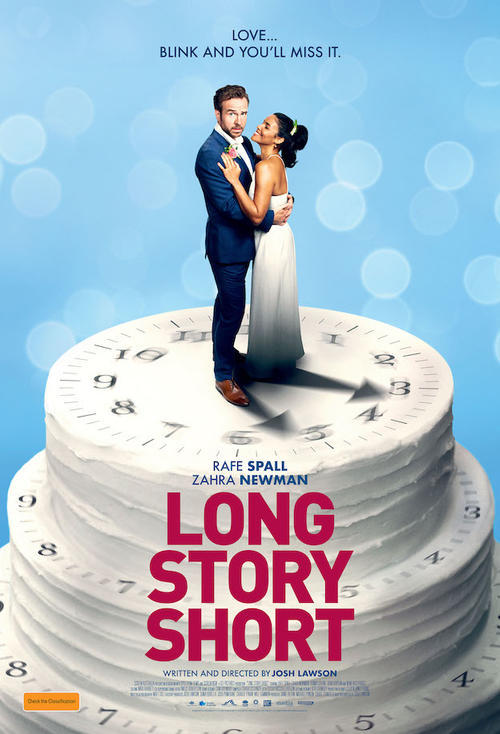
LONG STORY SHORT cast: Dena Kaplan, Ronny Chieng, Josh Lawson, Spall, Noni Hazelhurst.

#anthony perkins#tony perkins#oz perkins#James Badge Dale#the knick#eve hewson#behind her eyes#tom bateman#simona brown#anna baryshnikov#dickinson#hightown#bessie carter#bridgerton#imelda staunton#rafe spall#long story short#francesca scorsese#we are who we are#gabriel kane day lewis#celebrity children#celebrity kids#netflix series#netflix#film#hbo max#starz#uk actors
50 notes
·
View notes
Photo

James Augustine Aloysius Joyce was born on February 2, 1882. He was an Irish novelist, short story writer, poet, teacher, and literary critic. He contributed to the modernist avant-garde movement and is regarded as one of the most influential and important writers of the 20th century. Joyce is best known for Ulysses (1922), a landmark work in which the episodes of Homer's Odyssey are paralleled in a variety of literary styles, most famously stream of consciousness. Other well-known works are the short-story collection Dubliners (1914), and the novels A Portrait of the Artist as a Young Man (1916) and Finnegans Wake (1939). His other writings include three books of poetry, a play, his published letters and occasional journalism.
Joyce was born in Dublin into a middle-class family. A brilliant student, he briefly attended the Christian Brothers-run O'Connell School before excelling at the Jesuit schools Clongowes and Belvedere, despite the chaotic family life imposed by his father's unpredictable finances. He went on to attend University College Dublin.
In 1904, in his early 20s, Joyce emigrated to continental Europe with his partner (and later wife) Nora Barnacle. They lived in Trieste, Paris, and Zürich. Although most of his adult life was spent abroad, Joyce's fictional universe centres on Dublin and is populated largely by characters who closely resemble family members, enemies, and friends from his time there. Ulysses in particular is set with precision in the streets and alleyways of the city. Shortly after the publication of Ulysses, he elucidated this preoccupation somewhat, saying, "For myself, I always write about Dublin, because if I can get to the heart of Dublin I can get to the heart of all the cities of the world. In the particular is contained the universal."
Joyce's work has been an important influence on writers and scholars such as Samuel Beckett, Seán Ó Ríordáin, Jorge Luis Borges, Flann O'Brien, Salman Rushdie, Robert Anton Wilson, John Updike, David Lodge, Cormac McCarthy, and Joseph Campbell. Ulysses has been called "a demonstration and summation of the entire [Modernist] movement". The Bulgarian-French literary theorist Julia Kristeva characterised Joyce's novel writing as "polyphonic" and a hallmark of postmodernity alongside the poets Mallarmé and Rimbaud.
Some scholars, notably Vladimir Nabokov, have reservations, often championing some of his fiction while condemning other works. In Nabokov's opinion, Ulysses was brilliant, while Finnegans Wake was horrible.
Joyce's influence is also evident in fields other than literature. The sentence "Three quarks for Muster Mark!" in Joyce's Finnegans Wake is the source of the word "quark", the name of one of the elementary particles proposed by physicist Murray Gell-Mann in 1963.
The work and life of Joyce is celebrated annually on 16 June, known as Bloomsday, in Dublin and in an increasing number of cities worldwide, and critical studies in scholarly publications, such as the James Joyce Quarterly, continue. Both popular and academic uses of Joyce's work were hampered by restrictions imposed by Stephen J. Joyce, Joyce's grandson, and executor of his literary estate until his 2020 death. On 1 January 2012, those restrictions were lessened by the expiry of copyright protection of much of the published work of James Joyce.
In April 2013, the Central Bank of Ireland issued a silver €10 commemorative coin in honour of Joyce that misquoted a famous line from Ulysses.
Bibliography
Prose
Dubliners (short-story collection, 1914)
A Portrait of the Artist as a Young Man (novel, 1916)
Ulysses (novel, 1922)
Finnegans Wake (1939, restored 2012)
Poetry collections
Chamber Music (poems, Elkin Mathews, 1907)
Giacomo Joyce (written 1907, published by Faber and Faber, 1968)
Pomes Penyeach (poems, Shakespeare and Company, 1927)
Collected Poems (poems, Black Sun Press, 1936, which includes Chamber Music, Pomes Penyeach and other previously published works)
Play
Exiles (play, 1918)
Posthumous publications and drafts
Fiction
Stephen Hero (precursor to A Portrait; written 1904–06, published 1944)
The Cat and the Devil (London: Faber and Faber, 1965)
The Cats of Copenhagen (Ithys Press, 2012)
Finn's Hotel (Ithys Press, 2013)
Non-Fiction
The Critical Writings of James Joyce (Eds. Ellsworth Mason and Richard Ellmann, 1959)
Letters of James Joyce Vol. 1 (Ed. Stuart Gilbert, 1957)
Letters of James Joyce Vol. 2 (Ed. Richard Ellmann, 1966)
Letters of James Joyce Vol. 3 (Ed. Richard Ellmann, 1966)
Selected Letters of James Joyce (Ed. Richard Ellmann, 1975)
On 11 January 1941, Joyce underwent surgery in Zürich for a perforated duodenal ulcer. He fell into a coma the following day. He awoke at 2 am on 13 January 1941, and asked a nurse to call his wife and son, before losing consciousness again. They were en route when he died 15 minutes later. Joyce was less than a month short of his 59th birthday.
His body was buried in the Fluntern Cemetery, Zürich. Swiss tenor Max Meili sang "Addio terra, addio cielo" from Monteverdi's L'Orfeo at the burial service. Although two senior Irish diplomats were in Switzerland at the time, neither attended Joyce's funeral, and the Irish government later declined Nora's offer to permit the repatriation of Joyce's remains. When Joseph Walshe, secretary at the Department of External Affairs in Dublin, was informed of Joyce's death by Frank Cremins, chargé d'affaires at Bern, Walshe responded "Please wire details of Joyce's death. If possible find out did he die a Catholic? Express sympathy with Mrs Joyce and explain inability to attend funeral". Buried originally in an ordinary grave, Joyce was moved in 1966 to a more prominent "honour grave", with a seated portrait statue by American artist Milton Hebald nearby. Nora, whom he had married in 1931, survived him by 10 years. She is buried by his side, as is their son Giorgio, who died in 1976.
In October 2019, a motion was put to Dublin City Council to plan and budget for the costs of the exhumations and reburials of Joyce and his family somewhere in Dublin, subject to his family's wishes. The proposal immediately became controversial, with the Irish Times commenting: "...it is hard not to suspect that there is a calculating, even mercantile, aspect to contemporary Ireland's relationship to its great writers, whom we are often more keen to 'celebrate', and if possible monetise, than read".
Daily inspiration. Discover more photos at http://justforbooks.tumblr.com
30 notes
·
View notes
Text
As a person reaches adulthood, being independent becomes his goal. It isn’t only about being able to do things on his own, but it is also about not having to rely on others to do so. This is why independence is extremely valuable for each person. There is nothing wrong with being independent. However, this may not be ideal for everyone, especially for those who are in a nursing home in Elkins Park, Pennsylvania.
0 notes
Text
John watched the pyre burn, occasionally throwing another piece of wood into the embers. He leaned back against his truck as he waited for the fire to burn and die out, taking Elkins’s body with it.
He couldn’t really describe the last forty-eight hours, couldn’t really bring to words just how bone deep tired and drained he was. He felt like he wanted to crawl into the nearest bed, possibly not even caring if it was in Elkins’s cabin, and just sleep for a few weeks if not months.
Everything had just happened too fast for him to really take a moment to comprehend it all. From having one son to two, from believing that Mary was still out there to finding out that she was dead only to be brought back to life by those two said sons.
Combine everything else, the loss of his friends and allies, as well as everything that he had done with Sam within the last few hours, he was ready to just sit down and just...stop for a while. Sit and consider, just let himself try not to think about everything.
Or not think at all, that seemed like a good idea as well.
Once the fire died out he made the call, not caring which hunter he called so long as it wasn’t Bobby, and let them know that Daniel Elkins was dead and his cabin and whatever was left was up for grabs. After that, he got back into his truck and drove, just wanting to get away from everything.
He wasn’t sure how long he drove, he didn’t have a destination in mind. Just drove and drove. Filled his truck up with gas and kept driving, just wanting to put some distance between himself and...and what, he wasn’t sure.
But even he had to stop at some point and got off the highway, stopping at the first motel he saw that thankfully had a bar next to it. He got a room, didn’t bother to put up any protective lines or runes or anything, and just went to the bar wanting nothing more than a strong drink.
Stepping into the bar he wearily looked around, the room was half filled with a majority of the people around the pool tables while others were sitting scattered around in the shadows nursing their drinks.
He stopped at the barkeep for a moment, just to order something strong and to leave the bottle, taking both the bottle and the empty shot glass to an abandoned booth in the back. He focused on the drink and only that, not wanting to bother with anything else.
Each mouthful burned going down and he could feel the warmth spread inside of him almost soothingly. He’d finish this off, maybe he’d end up drinking the whole bottle, and go back to the motel next door and just...sleep for as long as he could.
Despite how tired he was, he already knew that he wasn’t going to sleep more than six hours, his body was too trained and ingrained to only sleep for that long at the most. He legitimately couldn’t sleep more than six hours and he couldn’t remember the last time he did.
No. That was a lie. He knew exactly when the last time he had a full night's worth of sleep. Back then. Before everything went to hell.
Sighing and shaking his head he poured himself another shot, picking it up and staring into the depths before swinging it back, swallowing it completely. He could see people walk around him from the corner of his eye, he never really relaxed anymore. Sometimes he could see a woman start to come towards him, hips swinging, but they always left when he didn’t pay them any attention.
Sometimes it was the ring on his finger, the ring he had never taken off. He had once entertained the idea but actually doing it made him feel even worse so he left it, no harm in having it there.
By law he was still a married man and as such, he had remained faithful. He hadn’t slept with anyone else during these last years and quite frankly, he didn’t have the desire to do it anymore regardless.
Not that it mattered, his faithfulness meant nothing when he thought about the rest of his guilt. He hadn’t been faithful when it meant the most, everything else was unimportant.
Staring into the depths of the now empty shot glass he could see someone slip into his booth across from him, hood up to hide their head and hair. Breathing out slowly he brought his head up and froze, feeling whatever effect the alcohol had given him immediately evaporate.
Mary brought her hands up and pushed the hood back, letting it fall down, as she stared at him with an apprehensive look on her face. She was leaning back into the booth, her arms at either side of her and not on the table.
“Mary.” he whispered, feeling his chest tighten until he couldn’t breathe.
#supernatural#Supernatural fanfic#supernatural fanfiction#spn fanfiction#366#155/366#366 day challenge#366 days of writing#standing between two worlds au#john winchester#mary winchester#mary campbell
2 notes
·
View notes
Text
RN Nursing Care of Children 11th edition
RN Nursing Care of Children 11th edition
RN Nursing Care of Children
Archer Knippa, Sommers, Ball, Churchill, Elkins, Janowski, Roberts, Wright, Prater, Barnes
Categories:
Medicine – Nursing
Year:
2019
Edition:
11
Publisher:
ATI
Language:
english
Series:
Content Mastery Series Review Module
, 3.95

View On WordPress
0 notes
Text
Margaret Sanger - An Introduction
Lauded as the founder of Planned Parenthood, the importance of Margaret Sanger in the feminist movement cannot be understated. As a pioneer for birth control, she pushed for bodily autonomy for women. In My Fight for Birth Control, she outlines the reasons for her push for birth control. She was a nurse who was forced to witness first-hand the effects of botched abortions for lower class women. These women did not have access to birth control and were told instead to use abstinence as a way to prevent pregnancy (Sanger 1931). After witnessing the senseless death of a young mother who had earlier begged Sanger for the secret way of preventing pregnancy that she did not have, Sanger decided to quit her nursing job and find ways to help these mothers who had no desire to have more children that they could not support (Sanger 1931). Unsafe abortions still cause the deaths of millions of women, with over five million to suffer from long term health issues caused by them (Haddad and Nour 2009).
Margaret Sanger aimed to stop the issues of unsafe abortion by making birth control and other sexual health items, such as condoms, available as well as to increase the knowledge of these items. She wrote a book that included information on a number of different contraceptive methods available to women, which was illegal during the time (Margaret Sanger - Our Founder 2016). Despite the corrections to some of these methods, the push for information was still instrumental in encouraging women to become responsible for their own reproductive health and rights in a world that treated women and issues relating to them as unimportant or second-class.
Margaret was ahead of her time when it came to feminist advocacy. The fight for women’s rights did not merely include voting; it included freeing women from living under the thumb of blatant misogyny when it came to their own bodies. Though she is no longer alive, the aftereffects of her work towards reproductive rights and the availability of contraception for all women is still a fight continued today. The US Supreme Court recently upheld a rule from the Trump Administration that states that employers have the right to “provide exemptions from the regulatory contraceptive requirements” based on “religious and conscientious objections” (Totenberg 2020). This statement undermines the work done by activists, including Sanger, to ensure that women have accessibility to necessary medications, some of which are used for things other than preventing pregnancy.
Works Cited
Haddad, Lisa B, and Nawal M Nour. “Unsafe Abortion: Unnecessary Maternal Mortality.” Reviews in Obstetrics & Gynecology vol. 2,2 (2009): 122-6.
Margaret Sanger - Our Founder. Planned Parenthood, 2016, https://www.plannedparenthood.org/files/9214/7612/8734/Sanger_Fact_Sheet_Oct_2016.pdf.
Sanger, M. (1931). My Fight for Birth Control. Elkins Park, PA: Franklin Book.
Totenberg, Nina. Supreme Court Undercuts Access To Birth Control Under Obamacare, 8 July 2020, https://www.npr.org/2020/07/08/884104509/supreme-court-undercuts-access-to-birth-control-under-obamacare.
1 note
·
View note
Text
Just occurred to me that this means no more The Knick soundtrack albums. Much less ok with this now.
#Son of Placenta Previa is such a tune#and Goodnight Nurse Elkins#and Pig Thermometer#and Humiliating Sewage
3 notes
·
View notes